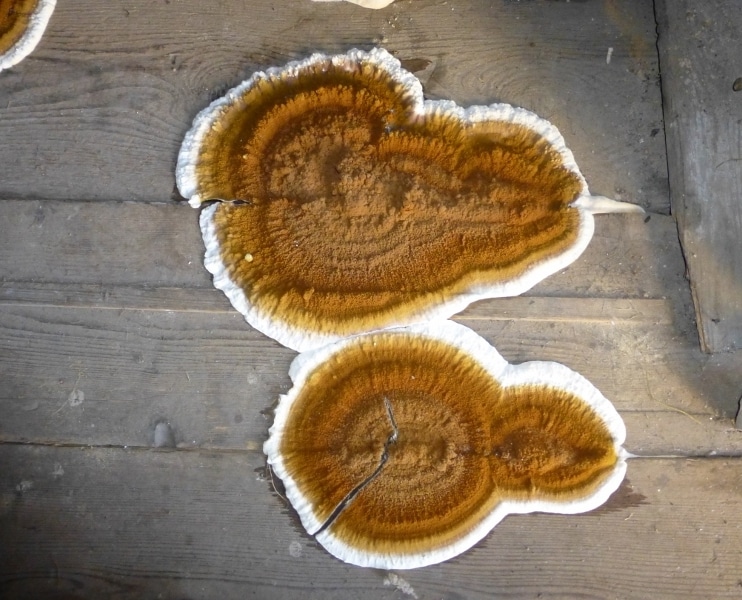Merula: development and effective treatment

Also known as “cubic rot”,this fungus is in most cases a consequence of the presence of dampness in a dwelling. But is merula a serious threat? After explaining what merula is and the conditions in which it develops, we’ll look at how it can be identified and what fungicides are effective in eradicating it.
What is merula?
The merula, also known as Serpula Macrymans, is one of the most feared wood-eating fungi . The damage it can cause is extensive and can go so far as to cause the collapse of an infected structure or require the destruction of a building.
This devastating fungus attacks all types of wood and masonry: on frames and floors, but also on skirting boards, for example. It feeds on wood, and more specifically cellulose: the wood becomes soft and crumbly, and the masonry decomposes into small irregular cubes, which is why it is also known as “cubic rot”.
Strongly attracted byhumidity, it prefers to grow inpoorly ventilated or darkcorners .
As a result, the combination of these factors creates an environment conducive to the development of merula. We don’t always see it coming, as it hides mainly in wall and floor coverings (roofs and cellars), but at a rate of 30 cm per month, this fungus can become extremely invasive very quickly.
How do you recognise merula?
Merula develops out of sight, but you can’t ignore it for long. It’s best to be vigilant and know the signs so you can detect it early and deal with the problem as soon as possible.
Signs that may alert you to the appearance of mérule :
- Walls or floors that are blistered to the touch , deformations or brown spots, skirting boards that warp, etc
- The appearance of substances resembling white cotton or greyish filaments, or spores in the form of orange spots with a powdery or dusty appearance
- A strong smell of undergrowth
- Traces of cubic rot : the wood seems to be disintegrating and losing its strength
If there is an outbreak of mould, it must be removed quickly. As well as causing damage to property, the fungus can be dangerous to health, particularly for the most vulnerable with respiratory problems (asthma). It is important to treat the problem quickly with the right products.
How can merula be treated to eradicate it?
To eradicate merula, there are a number of more or less drastic solutions, such as removing and replacing the wood affected. Other alternatives include drying out contaminated walls. In this case, regular checks are necessary to prevent the dreaded fungus from going into a dormant stage, before resuming its development once the conditions conducive to its growth have returned.
We recommend using our XILIX 2000 fungicide solution as a curative or preventive measure against possible attacks by wood-rotting fungi on masonry. Applying this fungicide will form a protective barrier to prevent the development of cubic rot. XILIX 2000, incorporating an innovative plant solution, is a product to be diluted with water (5%) and applied by surface application (brushing, spraying) or deep injection. We also recommend the use of our fungicide solution XILIX 2000 MER, specialised in the treatment of merula. This solution should be diluted with water (10%) before application.